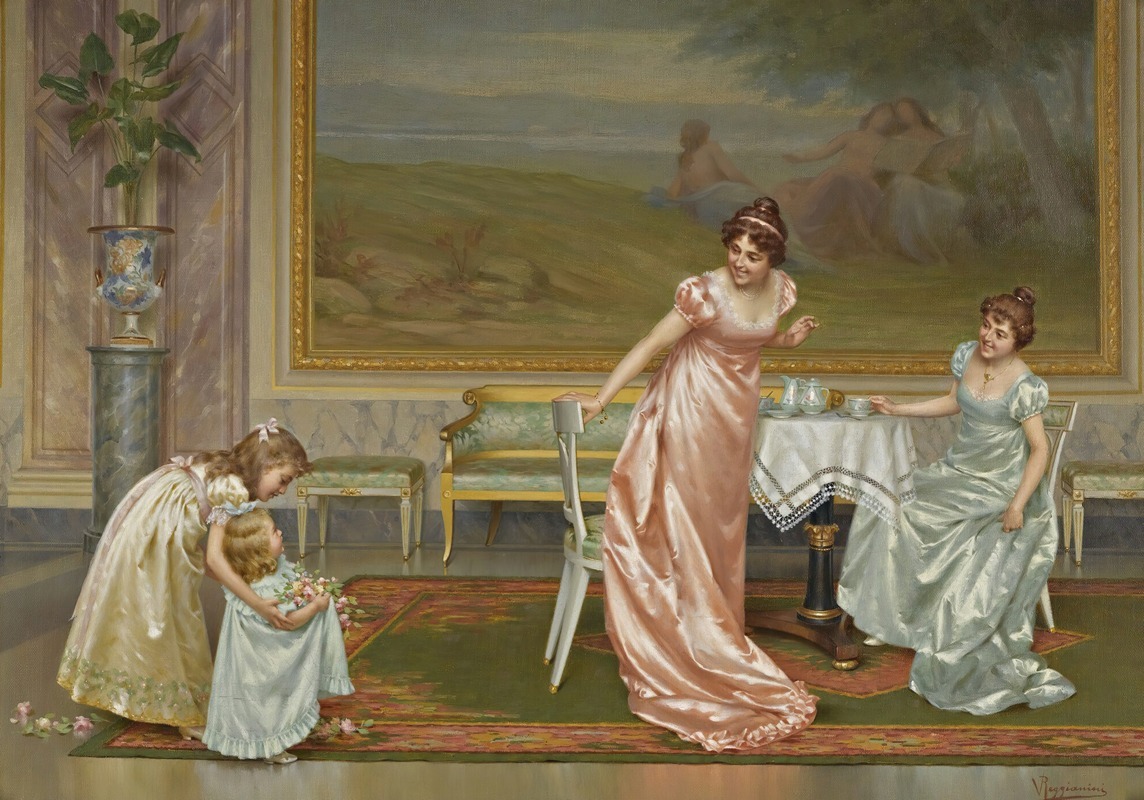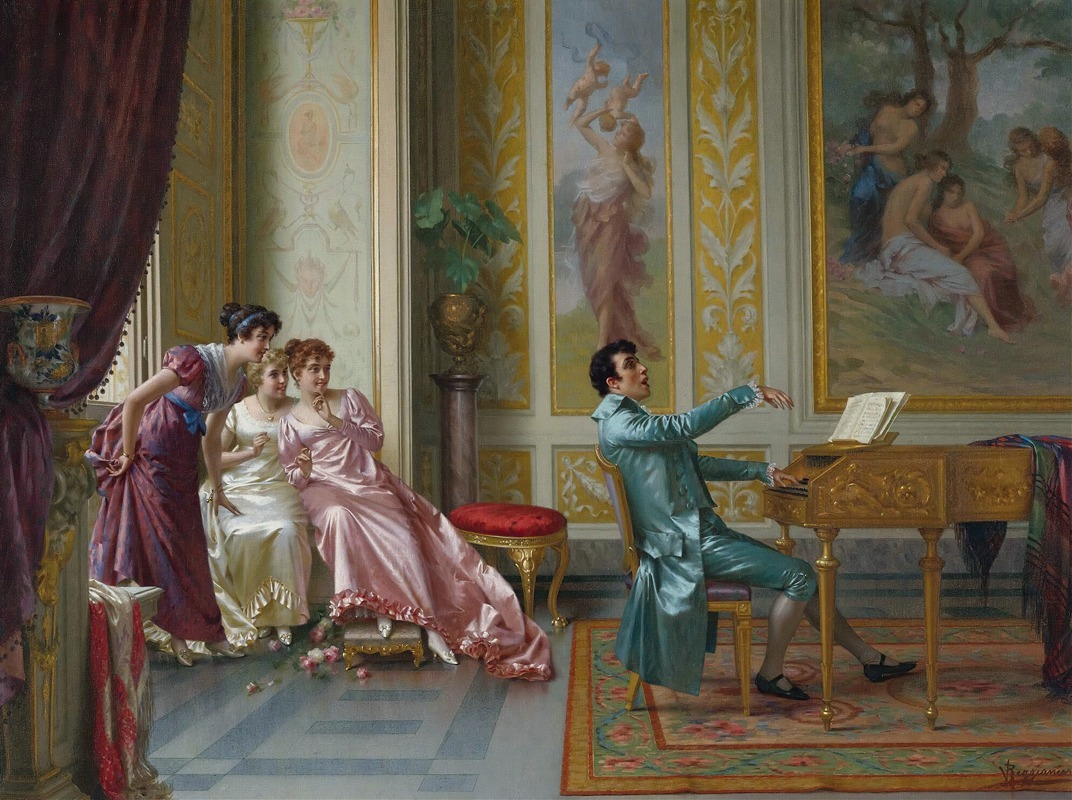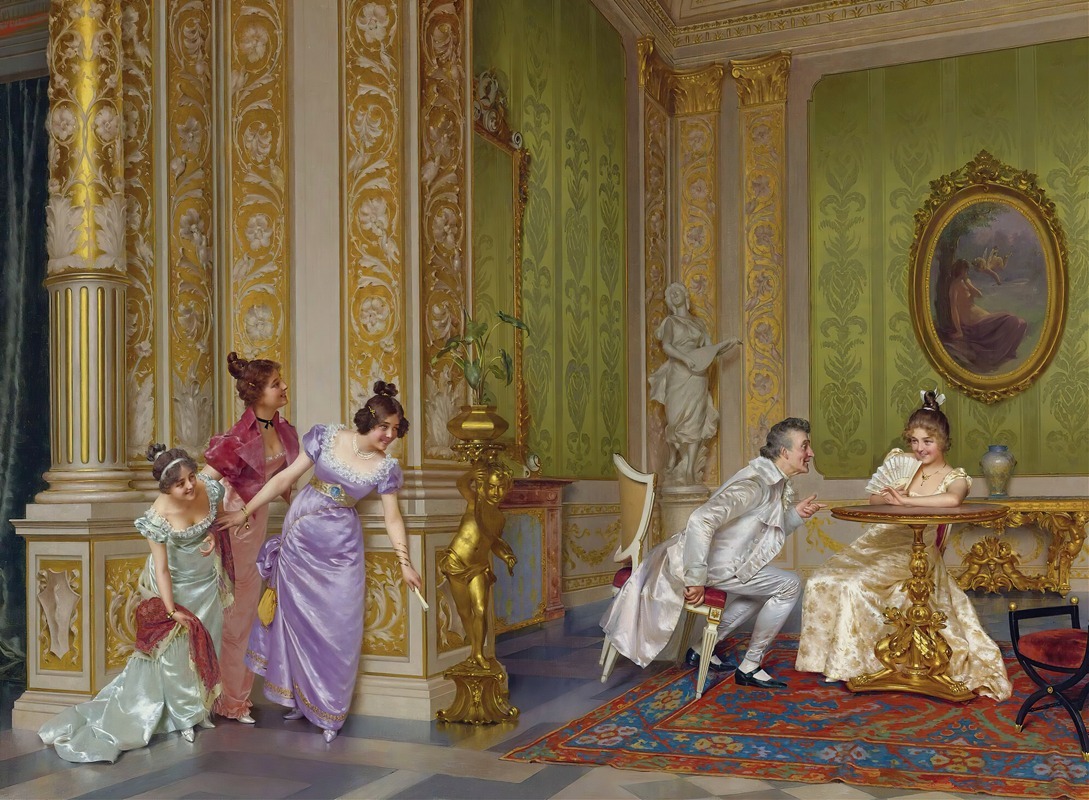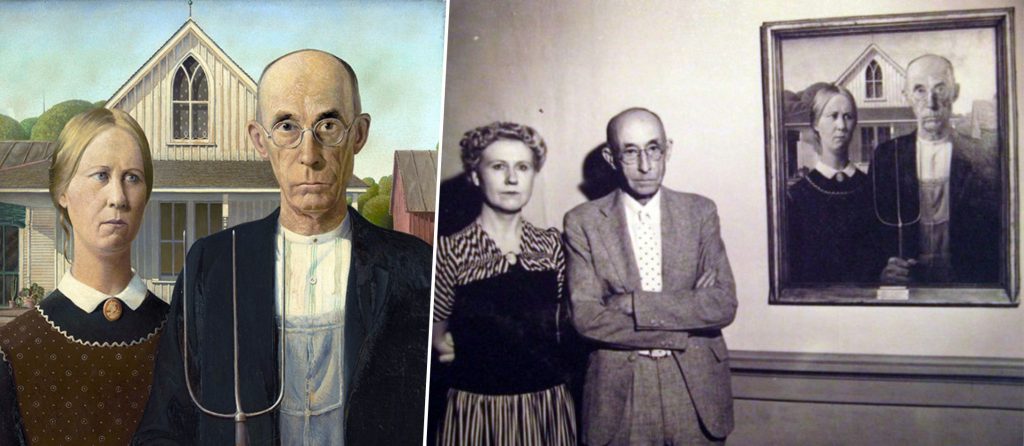There are painters who document life, and then there are those who elevate it—who wrap everyday emotions in silk, lace, and longing. One such name that continues to cast a soft, candlelit glow over the world of 19th-century genre painting is Vittorio Reggianini—a quiet magician of mood and texture, whose canvases feel less like paintings and more like scenes paused in time.
Born in Modena, Italy, in 1858, Reggianini wasn’t just a painter. He was a dream-weaver of the bourgeoisie—of whispered secrets, flushed cheeks, and perfectly poised glances exchanged in salons dressed in velvet and neoclassicism. Through his delicate brushwork, he gave us a world where even the silence had elegance.
From Modena’s Classrooms to Florence’s Drawing Rooms
Reggianini’s journey as an artist began in the structured halls of the Accademia di Belle Arti di Modena, under the guidance of masters like A. Simonazzi and G. Cappellini. He absorbed the foundations of verismo (realism), blending it with the poetic nostalgia of medieval revivalism.
His early work, like Sassolo de’ Sassoli Reveals the Conspiracy to His Father (1884), earned accolades. But it was in Florence, his adopted city from 1885 onward, where Reggianini truly found his voice—joining forces with fellow genre painters like Federico Andreotti and Francesco Vinea. These artists weren’t just painters; they were set designers, stylists, and subtle storytellers who shared studios, props, and even muses. Their paintings were proudly inscribed with “Firenze”—a nod to their brotherhood of beauty.

A Painter of Satin, Secrets & Suggestion
Reggianini didn’t paint the grand dramas of war or revolution. He focused on something far more fragile—the theatre of everyday elegance. His settings often whisper more than they shout. A chaise lounge here, a dropped fan there, and always—always—satin.
The Language of Fabric
In Reggianini’s world, fabric speaks louder than words. He captured the way silk bends with a breath, how satin catches the light just right. Critics have compared his detailing to miniature photography. But it’s more than technique—it’s how those textures evoke status, desire, and restraint.
Romance in Composition
Many of his paintings hum with romantic tension. Look closer at works like The Suitor or The Secret, and you’ll see triangular dynamics—two women, one man, and an undercurrent of flirtation and rivalry. The art within the painting (yes, he often painted paintings within his paintings!) usually echoes the emotional climate—a playful, self-aware wink from the artist.
Symbolism Beneath the Glamour
Even the most joyous scenes carry a touch of melancholy. Whether it’s a birthday gathering or a serenade, there’s a softness that hints at impermanence. His piece The Secret, where sisters lean in over a mysterious letter, brims with shared anxiety and anticipation—a moment caught between innocence and experience.

Why Empire-Era? Escapism in a Tumultuous Time
It’s fascinating that Reggianini, who lived through Italy’s turbulence—including the Italo-Turkish War—chose to depict not chaos, but calm. His settings draw from the Napoleonic Empire era, an age of refinement, leisure, and exaggerated elegance.
Scholars call him a “Costume Painter,” and rightly so. He dressed his characters in empire-waist gowns, Grecian hairstyles, and elegant interiors—inviting viewers into a past untouched by political unrest. Whether it’s a young lady receiving a palm reading (Il Chiromante) or a noblewoman cradling a lapdog, his art offered viewers a soft rebellion—a velvet escape into fantasy.
Reggianini in the Modern Market: The Satin Still Shimmers
Although he exhibited in Florence between 1907 and 1911, Reggianini’s acclaim grew after his death. And today, the art world still bids handsomely to own one of his glowing canvases:
-
La Romanza Preferita fetched $109,000 at Sotheby’s in 2008
-
The Fortune Teller is now valued between $30,000–$50,000
-
The Music Lesson sold at Christie’s for £20,000–30,000
His scenes, especially those featuring soubrettes—those charming, often cheeky maids—remain popular with collectors who find delight in the details: the gleam of satin, the smirk of mischief, the soft echo of laughter down a painted corridor.

A Legacy Draped in Light and Luxury
Vittorio Reggianini passed away in Rome in 1939, but his art hasn’t aged a day. While some may dismiss his work as sentimental or even kitsch, others see it for what it is: an exquisite suspension of time, a reminder that beauty, elegance, and human emotion are timeless.
In an age of fast visuals and fleeting attention spans, Reggianini’s slow, deliberate charm still pulls us in. A half-turned face, a rustling skirt, the curve of a smile half-kept—his paintings are love letters to life’s quieter, more tactile joys.
As one admirer perfectly put it,
“He combined fantasy with reality, sensuality with sensibility.”
And perhaps, in his world of painted whispers and satin secrets, we find something we rarely find today—grace, frozen in gold light.
- This 77-Year-Old Japanese Artist Creates Traditional Masterpieces Using… Microsoft Excel!
- Sketching a Flower the Right Way: A Beautifully Simple Guide from Melissa Washburn’s Botanical Drawing Book

Every Artist Has a Story. What’s Yours?
Whether you’re just getting started or have been creating for years, your story matters. At Art Tellers, we share real voices from real artists—what drives you, what you’ve learned, and why you keep going.
This is a space for honesty, inspiration, and connection. No filters. No hype. Just people who love to make things and aren’t afraid to say why.
Want to share yours? Send it to info@arttellers.com. We’re listening.

